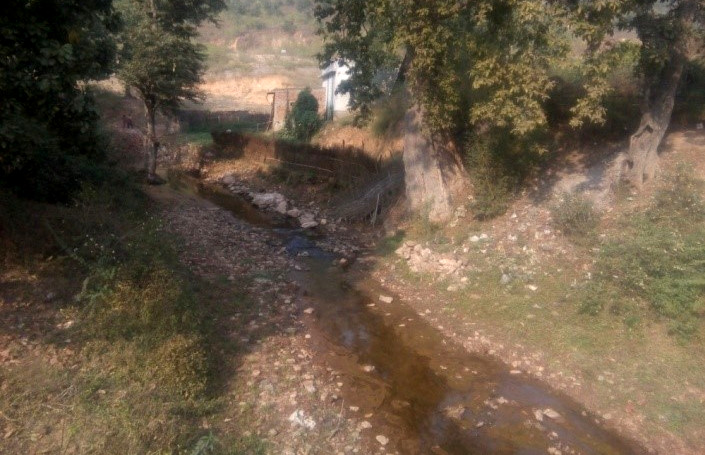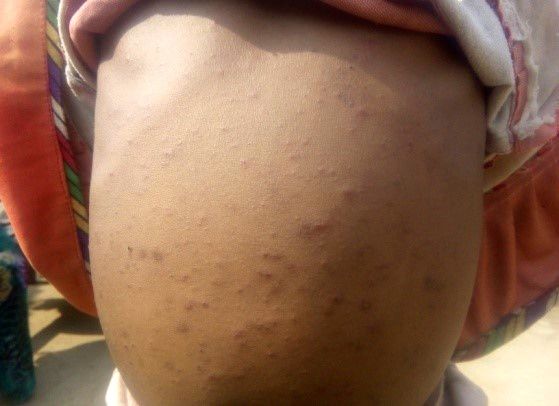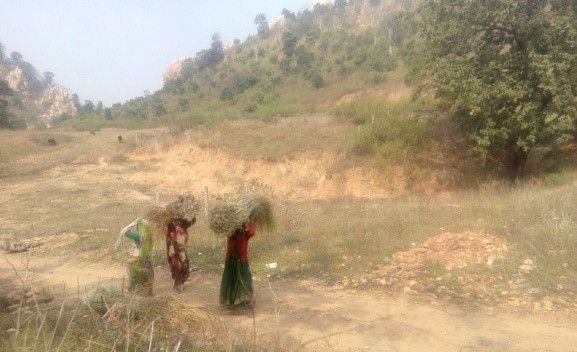The prominent culture has time and again defined the Rights on the natural dwellings of the Tribal communities’. The Acts and Policies that have been amended since the British era has reflected inclinations of the dominant culture. The term ‘Scheduled’ areas were introduced in the Scheduled District Act of 1874. It was through this Act that the Tribal dominated areas came to be defined as the ‘Scheduled Areas’ which were later divided into the ‘Excluded’ and ‘Partially Excluded’ areas. Under colonial governance, monopolization on the Forest was established by the inclusion of the words ‘Eminent Domain’ in 1864. Post-Independence, the Constitution seeks to provide autonomy and differential treatment to tribal areas through provisions in ‘Schedule V’ and ‘Schedule VI’ (Choubey, 2016).
The post-Independence era saw further disintegrations in the livelihoods of the communities’ dependent on the forest. Uttar Pradesh, especially the Vindhya region which is considered as one of the most forested regions in the state has also been witnessing the Industrial growth since several decades. The land of the natives has been lost and things have changed over the areas. But the movements for the same have not been in the rage as was needed. The diversion of forests for the industrial expansion, especially power generation has taken a great toll on the forest dependent people living here. The Industrial Policies and the proliferation of the industrial areas have embarked the question of ‘Who for Whom?’.
The total area under Forest in Uttar Pradesh is only 9.01% of the geographical area and population of Scheduled Tribe in the state is only 0.6% of the total. District Sonbhadra with 37.48% of its geographical areas as forest (Forest Survey of India, 2015) and with 20.7% of the population in the district comprising Scheduled Tribe (Census, 2011), both highest in the state, therefore turns out to be very important in terms of tribal rights. However, the tribal of the district are facing severe trouble in getting their rights under Forests Rights Act, 2006. Unfortunately, the resistances for their rights being exploited have not gained the momentum.
In Sonbhadra the administration is relying heavily on the forest department for verification. Villagers know it is the forest guards who are responsible for a number of letters issued by SDMs refusing or reducing the land claimed. Of the 64,671 applications received by the SDMs in Sonbhadra district till May end, nearly 87 per cent (55,980) were rejected. Only 9,725 applicants got land rights; several over an area much less than applied for. In Katuandhi village half the tribal population is angry, said members of the state-level monitoring committee. (Forest rights and wrongs in Sonbhadra, 2010).
The author carried out a study in the district Sonbhadra where 40 households from Anpara block were assessed. This included 20 households of Baiga from Manarvha tola and 20 households of Kharwar from Bichdi Tola. These tolas are the resettled ones and carry several incidents of disintegration in livelihoods due to Anpara thermal power plant. The study is mainly socio-anthropological in nature where unstructured questionnaire with open-ended questions was used and the information is mainly based upon focused case studies and direct observation.
Health Conditions
Most of the residents were found to be suffering from Tuberculosis and skin diseases. The polluted air and contaminated sources of water are making their lives even more difficult. The problem of itching was common among most of the Baiga children.


The children in the age group of 6-14 years are the ones who are mostly affected by the skin diseases. There was also a general lack of awareness among the people about these diseases. The interviews revealed that none of the households ever visited the nearby government hospitals and were mainly relying on private doctors for treatment. There were no visits by ASHA workers in the tola. The average expenditure spent on treatment is found to be in the range of Rs. 200-300 per week which is managed by themselves.
When it comes to Education, the situation is worrisome. The tribal households are highly distressed and the sources of income have to be diversified which makes their children involve in household-income activities such as working as wage laborers in brick kilns.
Gender Quotient in changing Livelihoods
Out of 40 households interviewed, it was being observed that it is mostly the female members of the households who are involved in Household chores. The following table summarizes the finding:
|
Number of households where both female and male were involved in household chores |
Number of households where only female members were involved in households chores |
Number of households where only male members were involved in Households chores |
|
32 |
8 |
Nil |
Apart from the Households activities, female members were also involved in the wage labor and collection of fuelwood. This has further implications on nurturing of children as the female members are mainly responsible for taking care of children.

With every folding era of the Indian society, tribal life has been molded and seen different turns which, if analyzed can bring about an existent burden on the she-side of the tribal society. In the pre-British era, women used to practice sowing, weeding and other agricultural activities which after the introduction of the land-ceiling and other factory works, doubled the burden upon the women as now they had to work in the farms and factories along with raising their babies. Therefore, when acculturation occurs, it can have varied impacts and with the major burden being tilted towards the female members. From taking care of the children in the households to cutting woods for the fuel, most of the household tasks are also to be looked by the female members. If the resettlement and migration occur to the urban areas, the problem can more be worse. Migration leads to accepting cultures and adjustment that can be beyond one’s sake and that burden mainly falls on the female members because it is the mother who mostly stays with the child and passes on the cultural adaptations to children. It might happen that few tribes who work on the patrilineal lines can have different impacts but one has to look that, the burden of children and nurturing them still falls on the females.
The author is a student of M.A Sustainable Livelihoods and Natural Resources Governance in Tata Institute of Social Sciences, Tuljapur. She can be contacted at
Disclaimer: This article is produced herein by the author in her personal capacity. The opinions expressed in this article are the author's own and do not reflect the view of the Vindhya Bachao Abhiyan/Vindhyan Ecology and Natural History Foundation.

